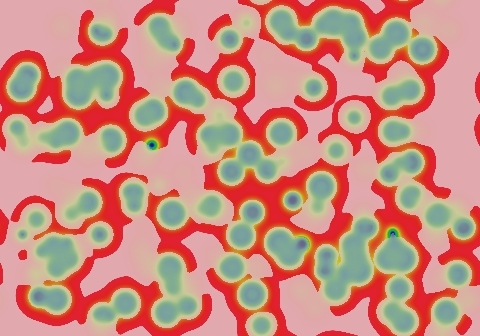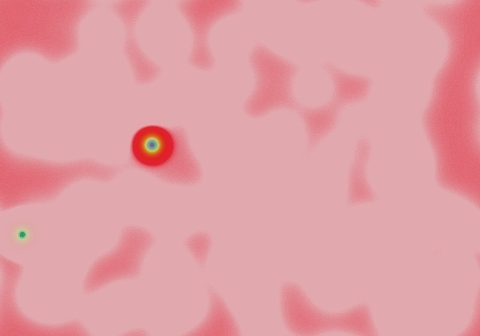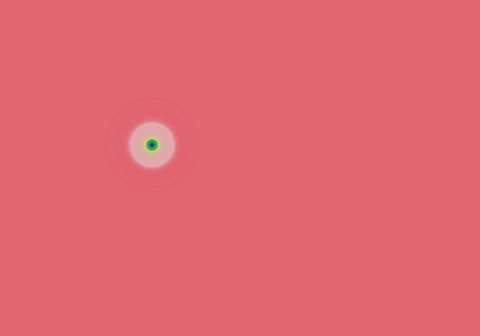Gray-Scott Model at F 0.0300, k 0.0710
These images and movie demonstrate the behavior of the Gray-Scott reaction-diffusion system with σ=Du/Dv=2 and parameters F=0.0300, k=0.0710.
These parameter values create "doomed" pulsar solitons that very closely resemble the viable solitons that arise just a bit to the west and north, before dying out. This one starts its final growing pulse 4400 tu after creation. The period (178 tu) is very close to that of other pulsar solitons in this region of the parameter space.
The eastern limit for solitons at F=0.0300 is about k=0.0707.
Categories: Pearson R; Wolfram 1 (glossary of terms)
 increase F increase F
 | |||
 decrease k  |


|
15 frames/sec.; each fr. is 20 iter. steps = 10 tu; 607 fr. total (6,070 tu) |  
|

|

| ||

 |
In these images:
- Color indicates level of u, ranging from purple (lowest u values) through blue, aqua, green, yellow and pink/red (highest u values)
- Areas where u is increasing are lightened to a light pastel tone; where u is decreasing the color is vivid.
- In areas where u is changing by less than ±3×10-6 per tu, an intermediate pastel color is seen. This includes areas that are in steady state or equilibrium.
''tu'' is the dimensionless unit of time, and ''lu'' the dimensionless unit of length, implicit in the equations that define the reaction-diffusion model. The grids for these simulations use Δx=1/143 lu and Δt=1/2 tu; the system is 3.2 lu wide. The simulation meets itself at the edges (periodic boundary condition); all images tile seamlessly if used as wallpaper.
Go back to Gray-Scott pattern index
This page was written in the "embarrassingly readable" markup language RHTF, and was last updated on 2015 Nov 07.
 s.27
s.27